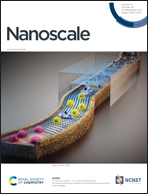Advances in photothermal nanomaterials for biomedical, environmental and energy applications
Abstract
Materials that exhibit photothermal effect have attracted enormous research interests due to their ability to strongly absorb light and effectively transform it into heat for a wide range of applications in biomedical, environmental and energy related fields. The past decade has witnessed significant advances in the preparation of a variety of photothermal materials, mainly due to the emergence of many nano-enabled new materials, such as plasmonic metals, stoichiometric/non-stoichiometric semiconductors, and the newly emerging MXenes. These photothermal nanomaterials can be hybridized with other constituents to form functional hybrids or composites for achieving enhanced photothermal performance. In this review, we present the fundamental insight of inorganic photothermal materials, including their photothermal conversion mechanisms/properties as well as their potential applications in various fields. Emphasis is placed on strategic approaches for improving their light harvesting and photothermal conversion capabilities through engineering their nanostructured size, shape, composition, bandgap and so on. Lastly, the underlying challenges and perspectives for future development of photothermal nanomaterials are proposed.

- This article is part of the themed collection: Recent Review Articles


 Please wait while we load your content...
Please wait while we load your content...